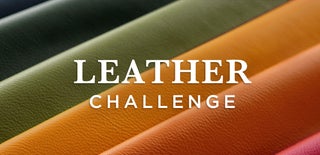Introduction: DTG Printing on Leather Swatches - and Laser Cutting Them
I have seen 'printed' faux leather online and wanted to create my own using the technology available to me. From my research the only technique I could find was sublimation on faux leather, with the sublimation being easily scratched off real leather.
Using leather swatch book that was reclaimed from a dumpster, and some patience I'll outline my process!
Be aware I have included photos of my fails, the flower prints which I used for testing, and my success which is the marble print.
Step 1: Leather Prep
The leather was a little wavy from aspects of its past life, so I gave it a quick press (20 seconds) in the heat press to flatten it. Give it a little time to cool down then move it to your work space.
+Lesson: Don't press for too long or you will have the edges curl up.
Next, using a fine grit sandpaper/sanding block I took of just the sheen of the leather. I want to keep all the natural contours of the material, so I just sanded enough just to take the very top layer off, or coating/sealer the manufacturer put on.
+Lesson: There is no need to press the leather again, just dust it off and it's ready to print on. If you do press it again it will curl up again without the coating to keep the fibers flat.
+Lesson: I did also try to coat the leather with light garment pre-treatment, turns out this isn't necessary to achieve the task and it doesn't provide any enhancement (and you would have to heat it to dry it).
Step 2: Printing on the Leather
* I totally forgot to mention, DTG is 'Direct to Garment', or a T-Shirt printer. It's just like a giant inkjet printer. The one I used here is industrial sized in our makerspace, but Brother do sell small hobby ones!
I prepared the platen by covering it with painter drop sheet to catch the ink that will go over the sides of the leather. Make sure it's super flat so you don't get any bumps in the leather and load the platen like you would with a garment.
I used a variety of setting, I'll go over what didn't work in 'lesson', but I found the ideal print settings were to set the dot size as small and have the printer do two passes. The ink is spread thin and dries fast ready for the next pass and doesn't pool in the crevasses of the leather.
+Lesson: I found that doing medium dot sizes and one pass made the ink pool up because it took too long to dry, doing a single pass with small dots did not give enough coverage or colour for a vibrant finish. And a single pass with heavy dots just flooded the leather and ran everywhere. So after all of these attempts a small dot with multipass set to 2 were the perfect settings to achieve my goal, I thing even 3 passes would be great for super bright colours on white leather.
When the print has finished move it to the heat press and do not put the press down. Just move the press to sit over the top and let the heat dry any damp parts and let the condensation release. I let mine for around 10 minutes while I got the laser ready.
Step 3: Laser Cutting the Leather
IF YOU HAVE THE LASER SETTINGS TOO HIGH EVERYONE IN THE WORKSPACE WILL HATE YOU.
This part STINKS, but you can lessen the smell by turning the power right down and prevent smoke marks.
(It smells like burnt popcorn or pork crackle and isn't nice at all)
I used 40% Power and 2% Speed, and had the leather supported by a piece of MDF. Once the cut is complete leave the leather to air out for a couple days in a well ventilated area, then it is ready to use!
I have attached the file I made if you want to test it out, I make all of my laser cutting designs in Adobe Illustrator.
Step 4: ENJOY
Add whatever accessories/findings you need and your jewelry is complete!
Thank you for reading!

Participated in the
Leather Challenge











